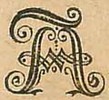About Incunabula, Old and Valuable Books
The department’s holdings of old and valuable prints, nearly 500.000 items in total, are stored partly in the library building on Josefsplatz, and commissioned by Emperor Karl VI. in 1723, partly in archival rooms formerly pertaining to the adjecant Augustian monastery. About one third of the volumes are kept in the baroque state hall.
The holdings include incunabula (books printed until 1500), printed matter ??? from 1501 to 1850 as well as rare, valuable and bibliophile prints (without any temporal limitation) and special holdings as Chinese or Japanese works.
The department is continuously completing its holdings by acquiring old and valuable prints (according to the directives) and making them available for the reader.
History of the holdings
The incunabula (ca. 8000 in total, some few even dating back to the collection of Emperor Friedrich III., r. 1440-1493) form the most precious part of the department’s holdings, covering about the fifth part of all titles printed in the 15th century. Especially worth of note are the only sample of Gutenberg’s 42-line bible (pr. Mainz 1454/55) extant in Austria, a complete perganent print of the Mainz Psalter (Johann Fust, Peter Schöffer 1457) and copies of nearly all bibles printed before 1500.
The imperial book collection was continuously and systematically added to - not only as part of the imperial treasure, but also following scientific and artistic requirements of the time. From the 16th c. onwards, directives for submitting copies were issued; these copies were meant to protect the printer’s interests by preventing unauthorised reproductions, but also to facilitate censure by the officials. Submission of deposit copies was finally stipulated when, at the Frankfurt book fair of 1569, the book commission was introduced. This praxis was extended to the whole of the Habsburg monarchy in 1808 and (although not always respected) helped to increase the library’s holdings significantly. Starting with Hugo Blotius’s appointment as court librarian to Emperor Maximilian II. in 1575, prefects like Gerard van Swieten or his son Gottfried van Swieten took care to enrich the collections. The private collections of some of the prefects - Sebastian Tengnagel (1573 - 1636), Peter Lambeck (1628 - 1680) oder Gerard van Swieten (1700 - 1772) – and eminent scholars as Viennese humanist Johannes Cuspinianus (1473 - 1529) brought even more additions to the holdings.
Due to different reasons, books from public institutions such as the University Library of Vienna (in 1756) or the Vienna City Library (in 1780) found their way into the library’s collections. The dissolution of monasteries during the reign of emperor Joseph II. (1780-1790) brought even more additions to the holdings, as did the collections of several members of the Habsburg family. When the Tyrolean line of the dynasty died out in 1665, most of the Ambras Castle library was brought to Vienna, as were the libraries of the Graz Castle library of the Styrian Habsburgs (in 1758) and the Habsburg family library („Fideikommiss“, in 1920) – this last one still being kept in the National Library’s Picture Archives.
The substantial holdings of historical newspapers includes the Wiennerische Diarium („Viennese Daily“), founded in 1703 and continued until today as Wiener Zeitung – and therefore the oldest daily newspaper still being published.
Other highlights of the collection are the stock of historical single-leaf prints, laws and decrees and the unique holdings of pamphlets and governmental publications on the revolution of 1848.
The department’s holdings are continuously added to by newly acquired historical prints (by purchase or book gift) and bibliophile prints of modern contemporary book artists.


